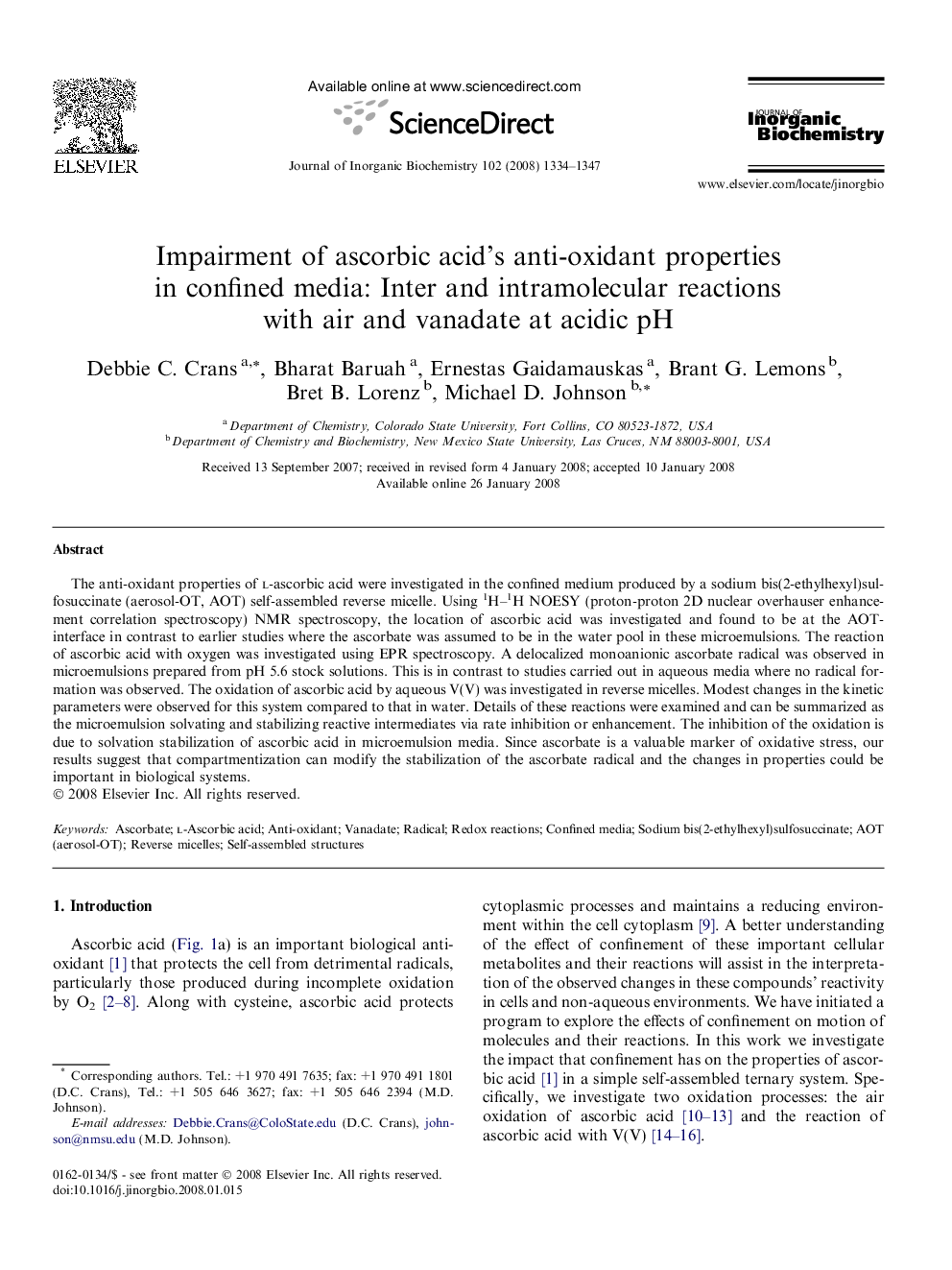| Article ID | Journal | Published Year | Pages | File Type |
|---|---|---|---|---|
| 1316609 | Journal of Inorganic Biochemistry | 2008 | 14 Pages |
The anti-oxidant properties of l-ascorbic acid were investigated in the confined medium produced by a sodium bis(2-ethylhexyl)sulfosuccinate (aerosol-OT, AOT) self-assembled reverse micelle. Using 1H–1H NOESY (proton-proton 2D nuclear overhauser enhancement correlation spectroscopy) NMR spectroscopy, the location of ascorbic acid was investigated and found to be at the AOT-interface in contrast to earlier studies where the ascorbate was assumed to be in the water pool in these microemulsions. The reaction of ascorbic acid with oxygen was investigated using EPR spectroscopy. A delocalized monoanionic ascorbate radical was observed in microemulsions prepared from pH 5.6 stock solutions. This is in contrast to studies carried out in aqueous media where no radical formation was observed. The oxidation of ascorbic acid by aqueous V(V) was investigated in reverse micelles. Modest changes in the kinetic parameters were observed for this system compared to that in water. Details of these reactions were examined and can be summarized as the microemulsion solvating and stabilizing reactive intermediates via rate inhibition or enhancement. The inhibition of the oxidation is due to solvation stabilization of ascorbic acid in microemulsion media. Since ascorbate is a valuable marker of oxidative stress, our results suggest that compartmentization can modify the stabilization of the ascorbate radical and the changes in properties could be important in biological systems.
